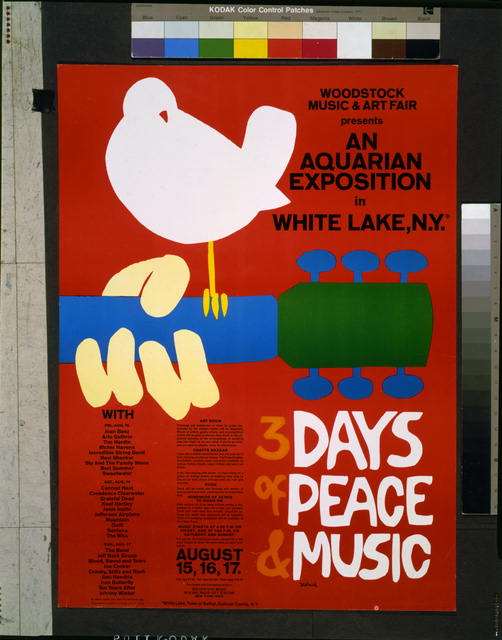On this day in 1969, the Woodstock Festival opened in Bethel, New York on Max Yasgur’s Dairy Farm. It drew an audience of over 400,000.
For many emerging performers of that era, Woodstock became a career-making event. Read more in this post about some of the artists who got their start at Woodstock.
NCTE recognizes the importance of music as an integral part of literacy education. NCTE’s Summary Statement on Multimodal Literacies begins with the declaration that “Integration of multiple modes of communication and expression can enhance or transform the meaning of the work beyond illustration or decoration” and calls for the inclusion of “art, music, movement, and drama, which should not be considered curricular luxuries.” Below we offer some NCTE resources to help make the connection between music and literacy in the classroom.
Symphony of Possibilities, A: A Handbook for Arts Integration in Secondary English Language Arts
A Symphony of Possibilities explores arts-based pedagogies for secondary teachers of English language arts. Drama, music, poetry, public art, and visual art are explored in detail by experts in their fields sharing proven methods of instruction with secondary students and teachers.
Reading Challenging Texts: Layering Literacies through the Arts
Bringing together arts-integrated approaches, literacy learning, and classroom-based research, this book explores ways upper elementary, middle, and high school teachers can engage their students physically, cognitively, and emotionally in deep reading of challenging texts.
Read a Song: Using Song Lyrics for Reading and Writing
While exploring well-known songs through this lesson from ReadWriteThink.org, students learn that songs consist of music and lyrics and make the connection between the words that are sung and the words that can be read. Students complete a project by writing new lyrics to a familiar song and creating illustrations related to the lyrics.
“America the Beautiful”: Using Music and Art to Develop Vocabulary
In this ReadWriteThink.org lesson, students learn the song “America the Beautiful” and the meanings of its words through shared reading and by using the words in a variety of ways. They then use drawings, descriptive language, and photographs to create a mural in the shape of the United States.
On a Musical Note: Exploring Reading Strategies by Creating a Soundtrack
Similarly, take advantage of students’ interest in music and movies with this ReadWriteThink.org lesson that asks students to create a soundtrack for a novel that they have read. As students search for songs and explain their choices, they engage in such traditional reading strategies as predicting, visualizing, and questioning.
Stairway to Heaven: Examining Metaphor in Popular Music
In this lesson from ReadWriteThink.org, students examine metaphors they find in the lyrics of popular music. Using an interactive tool, students illustrate and explain the metaphor, making connections between the literary texts they read in the classroom and musical texts with which they are already familiar.
How do you infuse music in the classroom?
Curious about the NCTE and Library of Congress connection? Through a grant announced by NCTE Executive Director Emily Kirkpatrick, NCTE is engaged in ongoing work with the Library of Congress, and “will connect the ELA community with the Library of Congress to expand the use of primary sources in teaching.” Stay tuned for more throughout the year!
It is the policy of NCTE in all publications, including the Literacy & NCTE blog, to provide a forum for the open discussion of ideas concerning the content and the teaching of English and the language arts. Publicity accorded to any particular point of view does not imply endorsement by the Executive Committee, the Board of Directors, the staff, or the membership at large, except in announcements of policy, where such endorsement is clearly specified.

